
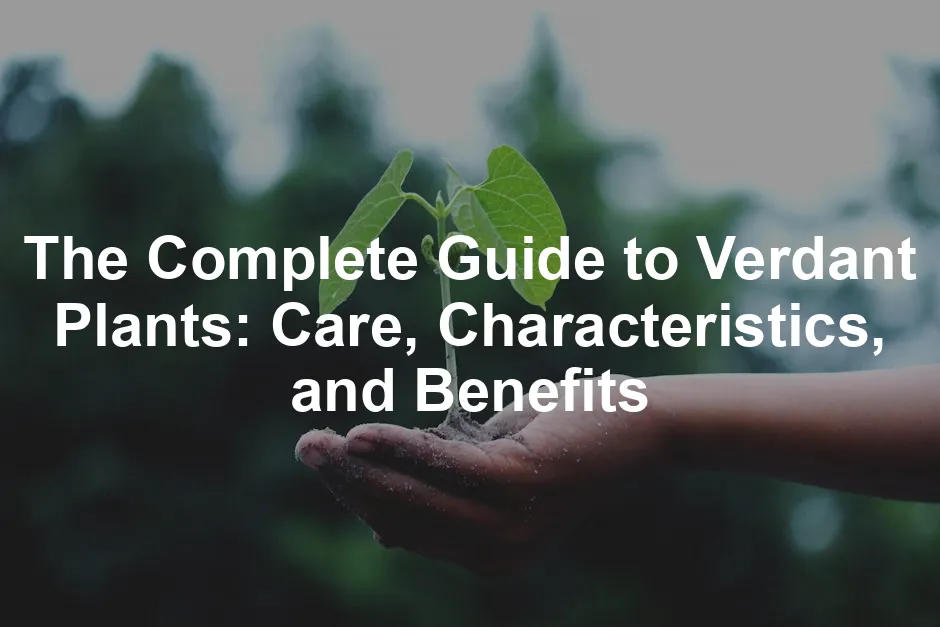
The Complete Guide to Verdant Plants: Care, Characteristics, and Benefits
Introduction
Verdant plants bring life and color to any space. Their lush greenery captivates plant enthusiasts everywhere. Understanding how to care for these plants is essential for thriving greenery. In this post, you’ll discover their characteristics, benefits, and care tips. Let’s get started on nurturing your love for verdant plants!
Summary and Overview
A verdant plant is characterized by its vibrant green leaves and thriving growth. These plants are popular for home decor and landscaping, adding a refreshing touch to interiors and gardens. They enhance any environment with their lush foliage, making them appealing to many. Additionally, they contribute positively to the environment by improving air quality and promoting biodiversity.
This article will cover various types of verdant plants, including ferns, broadleaf evergreens, and succulents. Each type brings unique benefits and aesthetic value. By the end of this post, you’ll be equipped with knowledge to choose the right verdant plants for your home or garden.
Understanding Verdant Plants
What Are Verdant Plants?
The term “verdant” refers to lush, green vegetation. In horticulture, it signifies plants with rich foliage. These plants thrive in various environments, showcasing a spectrum of green shades. Greenery in our surroundings fosters a sense of tranquility and peace.
Having verdant plants at home can uplift your mood and reduce stress. Studies show that interacting with plants can enhance mental well-being. Their presence creates a calming atmosphere, making your living space more inviting. So, why not invite some greenery into your home?
Characteristics of Verdant Plants
Verdant plants are known for their lush, vibrant green leaves. Typically, their leaves are broad and often vary in size, making them visually striking. You may find small, delicate leaves on some ferns, while philodendrons feature larger, hearty foliage.
The growth habits of verdant plants also differ. Some, like ferns, tend to spread outwards, creating a bushy appearance. Others, such as the philodendron, may climb or trail, adding dimension to your space.
Different types of verdant plants showcase unique characteristics. For instance, ferns often have feathery, intricate leaves, while philodendrons are known for their glossy texture. Popular examples include the Boston fern and the heartleaf philodendron. Both bring distinct beauty to indoor gardens, making them favorites among plant lovers.
Care Requirements for Verdant Plants
Light Requirements
Light plays a crucial role in the health of verdant plants. Most thrive in bright, indirect sunlight, but some prefer full sun. For example, succulents enjoy direct sunlight, while many ferns prefer shade.
Understanding the light requirements of your plants is essential for their health and growth. Learn more about succulents and their light preferences.
To assess light conditions in your home, observe how sunlight enters your space. Is it bright and direct, or does it filter through curtains? You can also use a plant light meter app to measure light intensity. This will help you choose the right plant for your specific environment.
Watering Techniques
Watering needs vary among verdant plants. Most require consistent moisture but can be susceptible to overwatering. Overwatering can lead to root rot, while underwatering causes wilting and yellowing leaves.
To ensure healthy growth, consider the type of plant you have. For instance, ferns thrive in moist conditions, while succulents prefer drier soil. A good rule of thumb is to water when the top inch of soil feels dry. Always use pots with drainage holes to prevent water from accumulating.
It’s important to understand the differences in watering needs among various plants. Explore how to care for orchids and other indoor plants.
Soil and Fertilization
Choosing the right soil is crucial for verdant plants. Most thrive in well-draining, nutrient-rich soil. For ferns, a mix of potting soil and peat moss works wonders. On the other hand, broadleaf evergreens prefer acidic, moist soil.
Soil pH plays an important role too. Most verdant plants thrive in slightly acidic to neutral pH levels. Regularly testing your soil with a soil pH test kit can help maintain the proper balance. Good drainage is essential to prevent root rot, so ensure pots have drainage holes.
Fertilization frequency varies by plant type. A general rule is to fertilize every 4-6 weeks during the growing season. Use a balanced, water-soluble fertilizer for best results. For slow-growing plants, a diluted fertilizer will suffice. Always follow package instructions for application.
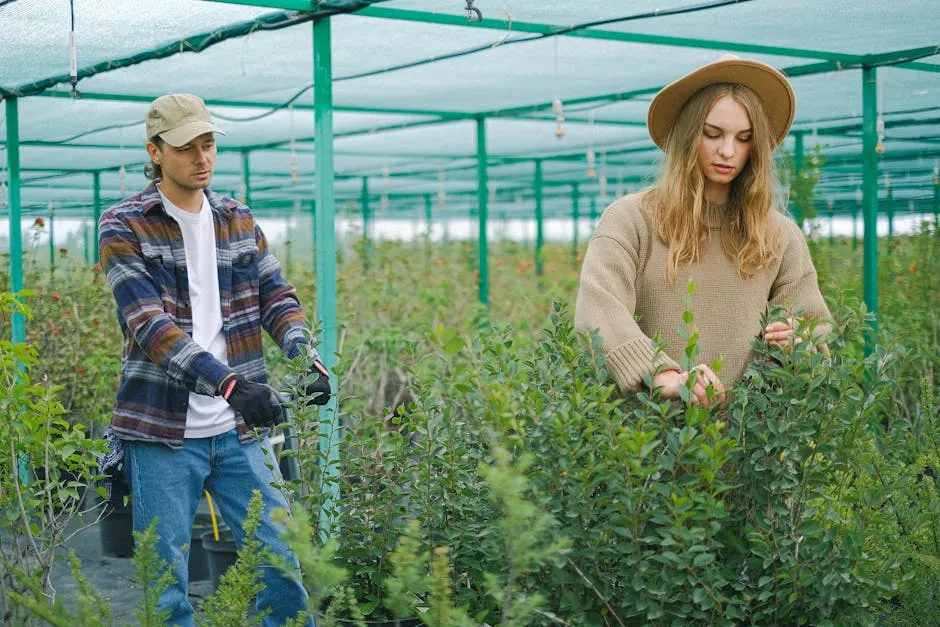
Pest and Disease Management
Common pests affecting verdant plants include aphids, spider mites, and mealybugs. They can sap your plants’ strength and vitality. To prevent infestations, regularly inspect your plants.
If you spot pests, act quickly. Neem oil or insecticidal soap can effectively eliminate them. You can also introduce beneficial insects, like ladybugs, to control pest populations naturally.
Regular plant inspections are vital. Look for signs of wilting or discoloration. Early detection of diseases like root rot or leaf spots can save your plants. Keep your plants clean by wiping leaves with a damp cloth to remove dust. Healthy plants are less prone to pests and diseases, so stay proactive in your care routine.
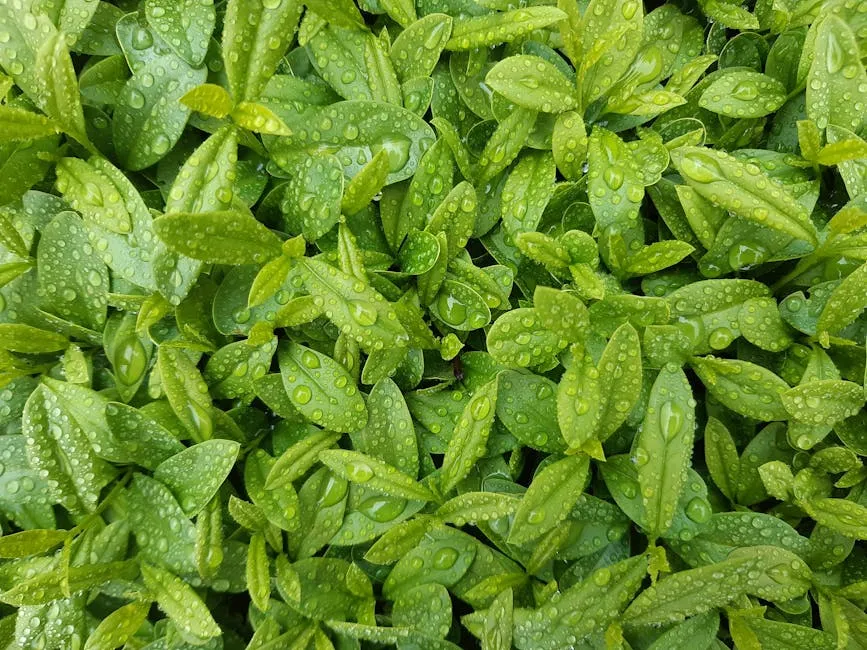
Succulents and Cacti
Succulents and cacti are popular verdant plants. Their vibrant shapes and colors make them a favorite among plant lovers. Varieties like aloe vera and jade plant require minimal care. This makes them perfect for beginners or busy individuals.
These plants store water in their leaves and stems. This water-saving feature allows them to thrive in dry environments. You can find them in homes, offices, and even outdoor gardens. They flourish in sunny spots and need well-draining soil.
Succulents and cacti are versatile. They can adapt to different climates, whether indoors or outdoors. With a little care, they can brighten up any space. Why not add a few to your collection? Consider a succulent plant collection for a stylish addition.
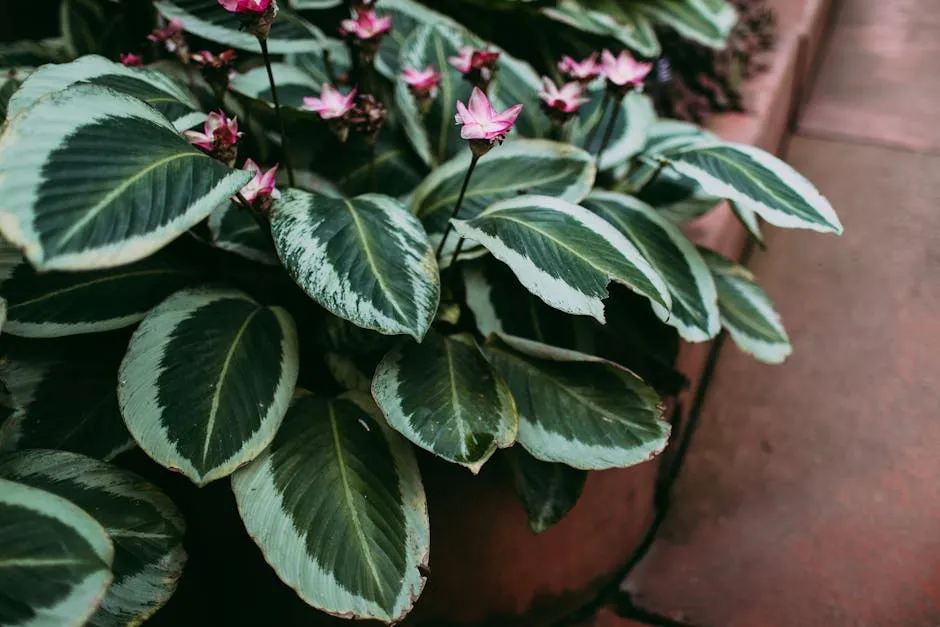
Carnivorous Plants
Carnivorous plants offer a fascinating twist to the world of verdant plants. These unique species, like the Venus flytrap and pitcher plant, attract and consume insects. They thrive in nutrient-poor soils, making them special in the plant kingdom.
Caring for these plants can be rewarding. They prefer bright, indirect light and high humidity. Regular watering with distilled water helps keep them healthy. Avoid tap water, as it can harm them.
Carnivorous plants also play a role in pest control. They naturally reduce insect populations without chemicals. This makes them a great addition to your home, especially in the kitchen or garden. Who wouldn’t want a plant that helps keep bugs at bay?

Benefits of Having Verdant Plants
Aesthetic Appeal
Verdant plants enhance interior decor beautifully. Their vibrant greens can breathe life into any room. From minimalist styles to bohemian vibes, these plants fit right in.
Consider placing a tall monstera in a corner or hanging ferns from the ceiling. They add a splash of color and texture. You can also mix smaller plants in terrariums for a chic touch. A terrarium kit can help you create a miniature garden that’s both beautiful and low-maintenance.
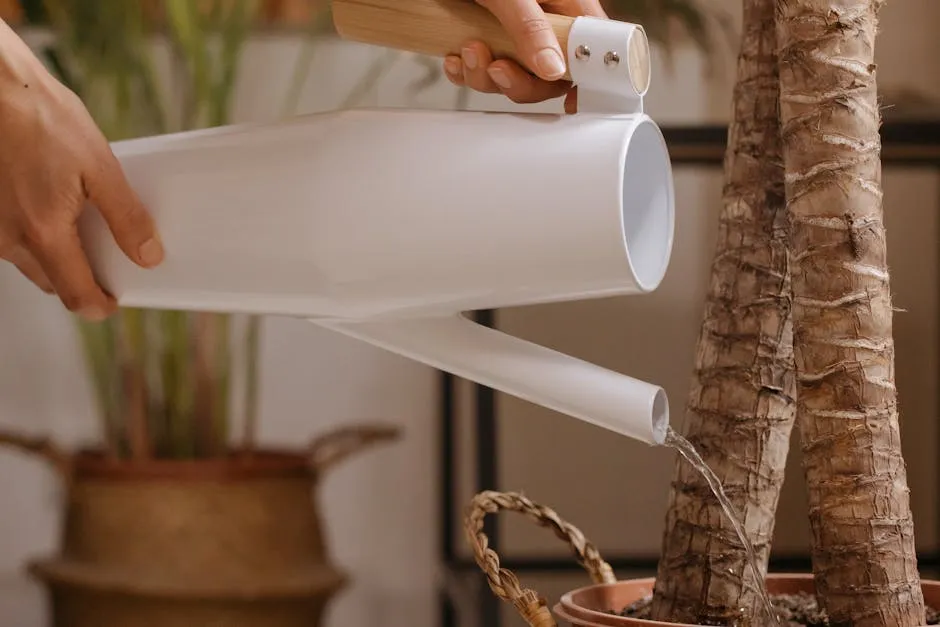
Health Benefits
Verdant plants are known for their air-purifying qualities. They filter toxins from the air, improving indoor air quality. This can lead to a healthier living environment for you and your loved ones.
Moreover, caring for plants provides mental health benefits. It can reduce stress and boost your mood. Just a few minutes spent tending to your plants can create a sense of calm. So, why not cultivate your own indoor oasis? Discover the best plants for improving air quality indoors.
Caring for plants not only beautifies your space but also enhances your well-being. Learn more about plants that improve indoor air quality.
Environmental Impact
Growing verdant plants significantly boosts biodiversity. These lush greens provide habitats for various creatures, from insects to birds. A diverse plant community supports a healthy ecosystem. When you grow more plants, you invite more wildlife into your space. This creates a vibrant and balanced environment.
Additionally, verdant plants play a crucial role in sustainable gardening practices. They help reduce soil erosion by holding the soil in place with their roots. This is especially important in areas prone to runoff. Many verdant species also require less water once established, promoting efficient water usage. By incorporating these plants into your garden, you contribute to a more sustainable future.
FAQs
What is a verdant plant?
A verdant plant is characterized by its lush green foliage. This term signifies plants that thrive in healthy, vibrant environments. Common examples include ferns, philodendrons, and broadleaf evergreens. These plants not only beautify spaces but also improve air quality and support biodiversity.
How do I care for my verdant plants?
Caring for verdant plants involves understanding their light, water, and soil needs. Most prefer bright, indirect light and consistent moisture. Monitor soil moisture levels to avoid overwatering. Regularly check for pests and provide adequate nutrients through fertilization.
Are there any low-maintenance verdant plants?
Yes! Some low-maintenance options include snake plants, pothos, and ZZ plants. These varieties thrive in various conditions and require minimal care. They’re perfect for busy individuals or beginners looking to add greenery without extra effort.
Can verdant plants improve indoor air quality?
Absolutely! Many verdant plants, such as peace lilies and spider plants, are known for their air-purifying properties. They filter harmful toxins, improving overall air quality and creating a healthier living environment.
Where can I buy healthy verdant plants?
You can purchase verdant plants from local nurseries, garden centers, or reputable online retailers. Websites like the Missouri Botanical Garden or Verdant Sol offer a wide selection of healthy plants. Always check reviews and ensure sellers provide quality care for their plants.
What are the best conditions for growing verdant plants indoors?
Indoor verdant plants typically thrive in bright, indirect light. Maintain humidity levels around 40-60% and keep temperatures between 65-75°F. This creates an ideal environment for growth and helps prevent stress on the plants.
How do I propagate my verdant plants?
Propagation methods vary by plant type. For most leafy plants, you can take cuttings and place them in water or soil. Ensure the cuttings have nodes for root development. Others, like succulents, can be propagated by leaf or stem cuttings, allowing them to root in dry soil.
Please let us know what you think about our content by leaving a comment down below!
Thank you for reading till here 🙂 If you’re feeling inspired to start your own garden, don’t forget to check out our gardening tools set for all your planting needs, and don’t forget to grab some plant food spikes to keep your greenery thriving!
All images from Pexels



